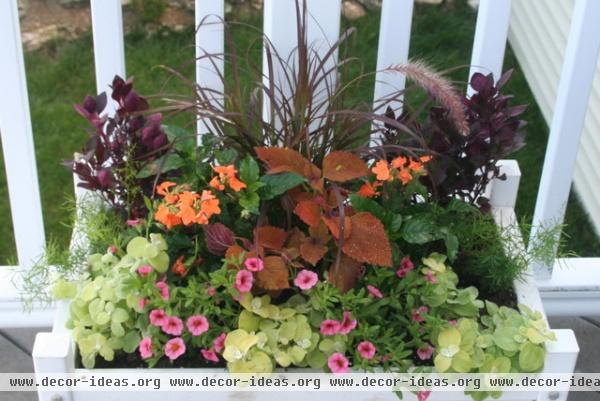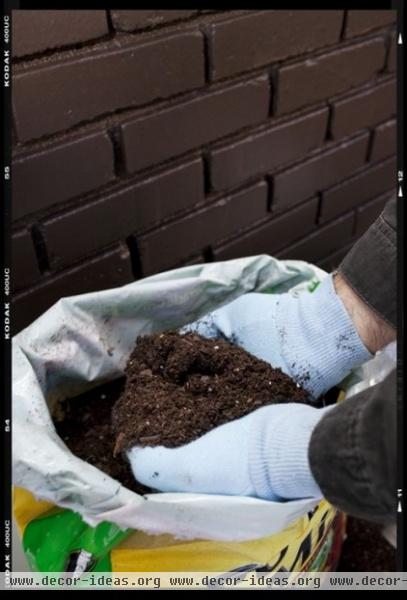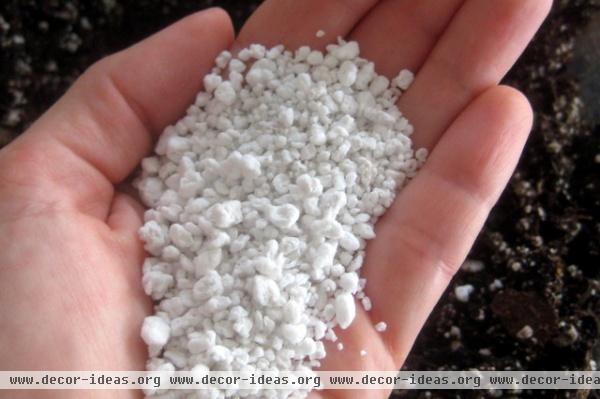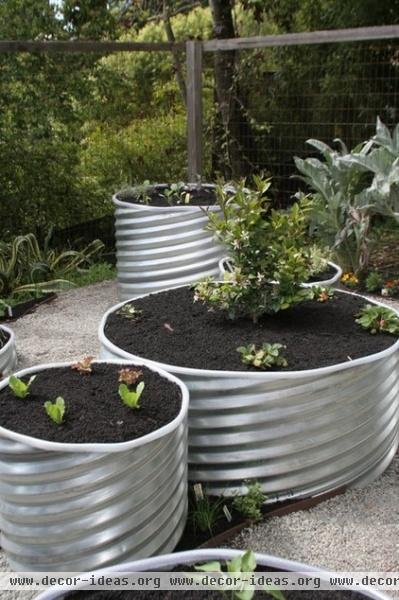Container Gardening Basics: The Dirt on Soil
http://decor-ideas.org 08/16/2013 23:40 Decor Ideas
The right soil or potting medium is essential for a successful container garden. The right soil will feed your plants and encourage strong root systems; the wrong soil can result in failure. It may sound simple, but it takes a variety of ingredients to achieve this, and the health of your container garden depends on it.

Properties of Good Potting Soil
A good potting soil will be porous to allow for proper drainage and root growth, while containing ingredients that will retain moisture and hold nutrients that would otherwise drain out.
Often, the term “soil” is a misnomer, as most commercially available potting mediums don’t contain actual soil, since it's difficult to obtain mass quantities of quality soil that is free of toxins, weeds and diseases.
You want to make sure you purchase potting soil for container gardens, as opposed to garden soil, which compacts too easily, preventing a healthy flow of air and water around your plants' root systems.

Commercial Potting Mix
Organic ingredients. A bag of commercial potting mix is made up of a variety of organic and inorganic materials. Organic ingredients retain water and provide essential nutrients. These ingredients typically include peat moss, ground pine bark, coir and composted manure.
Peat moss is often added to mixes for its ability to hold water, nutrients and air. It has a slightly acidic pH, which allows roots to take in nutrients.
While they don't retain moisture, pine bark particles improve the porosity of the potting medium. Coir comes from coconut hulls and is excellent at retaining water. When mixed with pine bark, it can reduce the need for peat moss, which is a nonrenewable resource.
Composted manure is manure that has aged up to a year. It increases nitrogen levels and loosens the soil.

Inorganic ingredients. These ingredients aid drainage while adding weight to the mix. They may include coarse sand, vermiculite, perlite (shown) and/or calcined clay.
Different types of plants like different types of potting mixes. Most annuals and perennials benefit from an all-purpose potting mix, but succulents and cacti require a mix that is well draining and less water retentive; these mixes will typically include more sand, bark or perlite. Be sure to check the label to choose the best potting mix for your chosen plants.

DIY Potting Mix
Commercial mixes can be pricey, so if you need a large amount of potting soil, you might consider making your own potting mix.
To create it, mix one part garden soil, one part peat moss and one part perlite or coarse sand. If using your own garden soil, avoid using soil near any diseased plants; it’s actually recommended that you “pasteurize” it by baking it in an oven at 250 degrees for about 45 minutes. This helps get rid of harmful organisms or diseases.
Whether you use a bagged mix or create your own, add an organic fertilizer to ensure the plants receive the proper nutrients to flourish. (Check the label on any bagged mix first to make sure fertilizer isn't already included). You can easily incorporate a granular, slow-release fertilizer to feed your plants over a period of time.
Read more about Container Gardens on Houzz
More: How to Pick a Mulch — and Why Your Soil Wants It
Related Articles Recommended












